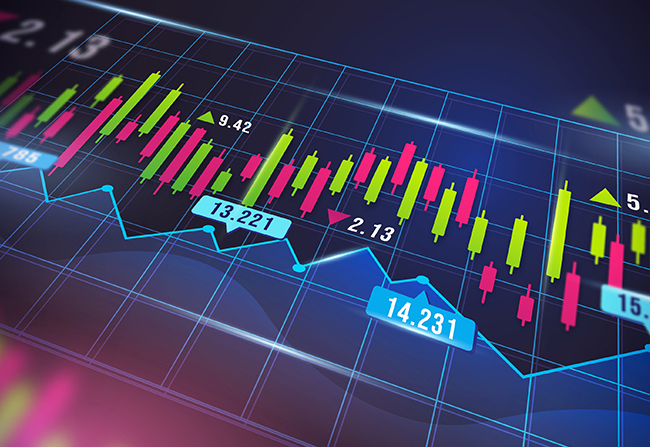
Technical indicators are essential tools in a trader’s toolkit. They help analyze past price movements, forecast future price behavior, and identify potential trading opportunities. These indicators can be used to create strategies, identify trends, and support decision-making, making them an integral part of both beginner and experienced traders’ routines. However, understanding how to use these tools correctly is crucial to avoid overcomplicating or misinterpreting market signals.
Technical indicators come in many forms, each designed for specific purposes. Some indicators help identify market trends, while others focus on market momentum, volatility, or market strength. Combining these indicators, along with other forms of analysis like candlestick patterns or chart patterns, can provide a comprehensive view of the market. In this article, we’ll take a closer look at some of the most widely used technical indicators and how they can help you improve your trading strategy.
What Are Technical Indicators?
Technical indicators are mathematical calculations based on historical price data, typically involving the price and volume of an asset over a specific period. These indicators are plotted on price charts to help traders identify trends, potential reversal points, and overbought or oversold conditions.
Technical indicators are typically classified into two categories:
Leading Indicators:
These indicators are used to predict future price movements. They give early signals of potential market reversals or trend changes, helping traders make decisions before the market confirms the movement. The Relative Strength Index (RSI) and Stochastic Oscillator are examples of leading indicators.
Lagging Indicators:
These indicators follow price movements and provide confirmation of trends. They are often used to verify signals from other indicators or to identify the strength and direction of a current trend. The Moving Average and Moving Average Convergence Divergence (MACD) are popular lagging indicators.
While no indicator is foolproof, understanding how to use them correctly can give traders an edge when analyzing the market.
Popular Technical Indicators and How to Use Them?
There are dozens of technical indicators, but certain ones are especially useful for beginners. Here’s a closer look at a few of the most commonly used indicators in trading:
Moving Averages (MA):
Moving averages are used to smooth out price data and help traders identify trends by averaging the price over a specific period. There are different types of moving averages, including:
- Simple Moving Average (SMA): The average of prices over a specific time period.
- Exponential Moving Average (EMA): A type of moving average that gives more weight to recent prices, making it more responsive to market changes.
Traders use moving averages to identify trend direction. When the price is above the moving average, it’s typically seen as a bullish signal, while being below it can signal bearish conditions.
Relative Strength Index (RSI):
The RSI is a momentum oscillator that measures the speed and change of price movements. It moves between 0 and 100 and is typically used to identify overbought or oversold conditions in a market. An RSI value above 70 generally signals that an asset is overbought, while an RSI below 30 indicates it is oversold. Traders use these signals to anticipate potential reversals.
Moving Average Convergence Divergence (MACD):
The MACD is a trend-following momentum indicator that shows the relationship between two moving averages of an asset’s price. It’s made up of the MACD line (difference between the 12-day EMA and the 26-day EMA), the signal line (9-day EMA of the MACD line), and a histogram that represents the difference between the two lines.
The MACD is often used to spot potential buy or sell signals when the MACD line crosses above or below the signal line. Additionally, traders look for divergence between the MACD and price action as a sign of potential trend reversals.
Bollinger Bands:
Bollinger Bands consist of a simple moving average and two standard deviation lines above and below it. These bands widen and narrow based on market volatility. When the price moves near the upper band, it may signal that the asset is overbought, while a move near the lower band could indicate an oversold condition.
Traders use Bollinger Bands to identify volatility and potential breakout or breakdown points. A price breakout above or below the bands can signal that a strong price move may be on the horizon.
How to Combine Indicators for Better Trading Decisions:
Using a single technical indicator can provide valuable insights, but combining multiple indicators can give you a clearer and more accurate picture of the market. For example, combining trend-following indicators like moving averages with momentum indicators like the RSI can help confirm whether a trend is likely to continue or reverse.
When using multiple indicators, however, it’s important to avoid “analysis paralysis”—the tendency to overcomplicate decisions by using too many indicators. Stick to a small set of indicators that complement each other, and use them to confirm or refute trade signals.
Here’s an example of a simple strategy using the MACD and RSI:
- Buy Signal: When the MACD crosses above its signal line and the RSI is below 70 (not overbought), it could be a signal to enter a long position.
- Sell Signal: When the MACD crosses below its signal line and the RSI is above 30 (not oversold), it could be a signal to sell or short.
By combining these indicators, traders can reduce the likelihood of false signals and improve their overall trading accuracy.
Common Mistakes When Using Technical Indicators:
While technical indicators can be highly useful, traders should be aware of common mistakes that can lead to poor trading outcomes:
- Over-reliance on Indicators:
No indicator is perfect, and relying solely on one or two can lead to misinterpretation of the market. It’s essential to combine technical indicators with other forms of analysis, such as price action or market fundamentals, to form a complete trading strategy. - Using Too Many Indicators:
Overloading your charts with multiple indicators can be confusing and lead to conflicting signals. Instead, focus on a few indicators that complement each other and provide clear insights into the market. - Ignoring Market Context:
Technical indicators are most useful when combined with an understanding of the broader market context. For example, even if the RSI shows an asset is oversold, it may not signal a reversal if the broader market trend is still bearish. Always consider the bigger picture.
Conclusion:
Technical indicators are valuable tools that can enhance a trader’s ability to analyze the markets and make informed decisions. Whether you’re using moving averages, RSI, or MACD, understanding how each indicator works and how they can complement one another is key to developing a successful trading strategy.
As a beginner, it’s important to start simple, practice using these indicators on demo accounts, and slowly incorporate them into your trading plan. With patience, practice, and discipline, you can effectively use technical indicators to navigate the markets and improve your chances of success.




